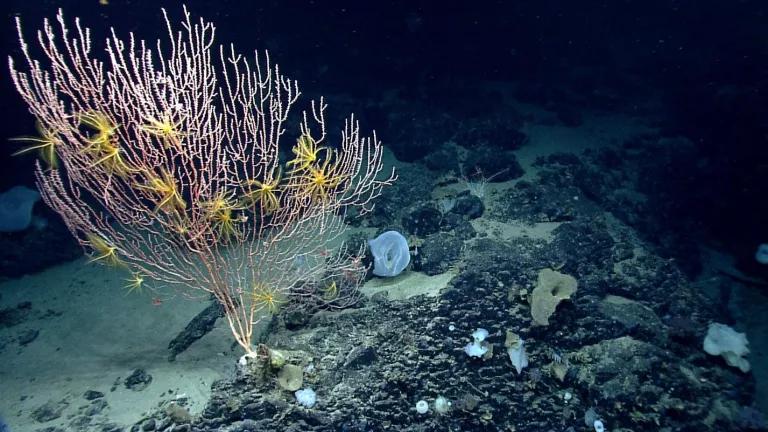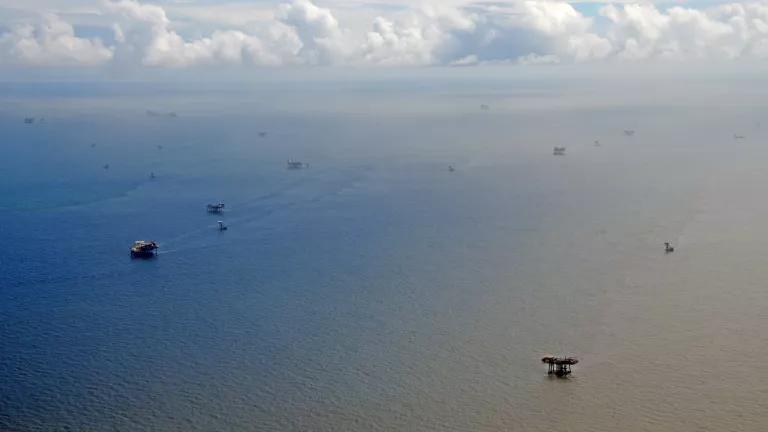
For years, representatives of the New England commercial fishing industry have claimed that the Northeast Canyons and Seamounts Marine National Monument would cripple their fisheries. They used that claim to oppose the monument’s designation—which was a historic ocean conservation move to protect this unique treasure.
The Monument has been in place for two years, and we can now begin to assess these claims. It turns out they’re not true. Government landings and revenues data show no indication that the Canyons and Seamounts monument has caused any economic loss for the commercial fishing industry.
One more thing: as I’ll discuss later in this piece, according to revelations in the news this week, it turns out that the Interior Department itself doesn’t believe that the Monument prohibition on commercial extraction, including commercial fishing, was causing any meaningful economic harm to the fishing industry, and the agency purposefully decided not to disclose this fact in December 2017 when it recommended that the commercial fishing prohibition be eliminated.
For our analysis, NRDC examined public data on commercial landings and revenues from the Atlantic Coastal Cooperative Statistics Program, which is charged with compiling this information for fisheries along the Atlantic coast. We specifically looked at landings and revenues for the squid, mackerel, and butterfish fishery and the Atlantic highly migratory species (HMS) fishery, principally targeting tuna and swordfish. These are the primary commercial fisheries that had been operating in the Monument area, according to the fishing industry, and that are now prohibited. Recreational fishing is still permitted. Fisheries for red crab and lobster are still permitted for five years.
This data shows that:
- Overall landings of squid, mackerel and butterfish increased 54% last year (in comparison to the previous 5 years, from 2012 to 2016);
- Overall revenues from squid, mackerel and butterfish increased 27% last year (in comparison to the previous 5 years); and
- Landings and revenues of tuna and swordfish were unchanged last year.
Further information on the analysis is here.
Our findings coincide with news coverage over the last two days. First, in an article that the Washington Post published Monday, Juliet Eilperin documented how the Interior Department had systematically dismissed or discounted information during its monument review process that did not support the agency’s goal of opening up these publicly-held ecological and scientific gems to private commercial extractive uses. (I wrote about the Interior review here.) Among other examples, the article highlighted a disturbing finding relating to the review of New England’s marine monument. Eilperin reports that the review’s lead Interior staffer suggested deleting language that most fishing vessels near the Canyons and Seamounts Monument “’generated 5% or less of their annual landings from within the monument’ because it ‘undercuts the case for the ban being harmful.’”
In an article published in yesterday’s E&E News, Jennifer Yachnin elaborated on what was disclosed in the Interior Department documents about the Monument. According to the article, the Interior staffer wrote in emails that impacts on fishermen were “so minor” “as to undercut the case for making changes” in the Monument and that only four vessels relied on the Monument for more than 25% of their revenues of their annual revenues in 2014-15.
What Interior knew—and dismissed, according to the news coverage, as “undercut[ting] the case for the commercial fishing closure being harmful”—is consistent with the publicly available commercial fishing landings and revenues data we analyzed. This data show that—no surprise—those few fishing vessels that had been fishing in the Monument are now catching the small amount of fish that they used to catch in the Monument somewhere else. These are large fisheries, including in the area they cover. The HMS fishery, for example, covers the U.S. Atlantic and well out into international waters.
The Monument is a relatively small (less than 1.5% of the U.S. Atlantic waters), remote, rugged and deep area. The Monument area was never a critical fishing spot.
The Northeast Canyons and Seamounts is, however, a highly vulnerable biodiversity hotspot, home to deep sea coral forests as ancient as redwoods, endangered whales and rare seabirds, and a dizzying array of other species that are literally still being counted. This special area owned by the American people deserves—and is required by law—to stay protected from all commercial extractive uses. The argument that doing so is causing economic harm should be put behind us.
As for the revelations in the news articles, they only further discredit the Trump Administration’s illegal attack on national monuments. The notion that Secretary Zinke and his aides would intentionally distort their own analysis to benefit commercial interests—in direct opposition to what the American people urged Zinke to do—is appalling. This marine area off New England is a true national treasure that is now protected for all time and needs to remain that way. With the curtain pulled back on Interior’s sham review, it could not be clearer: there is no scientific or legal—and certainly not economic—basis for making changes to the Northeast Canyons and Seamounts Monument.




